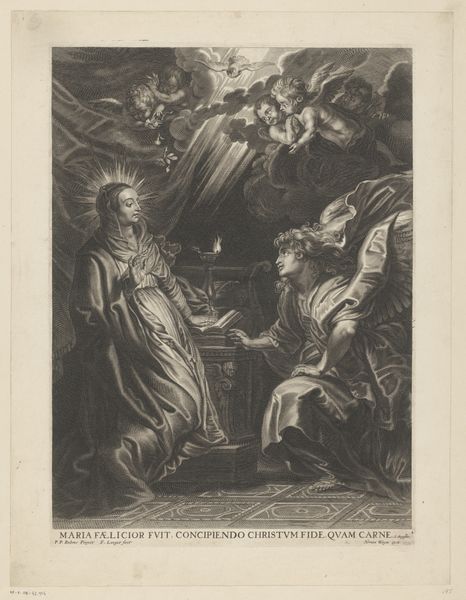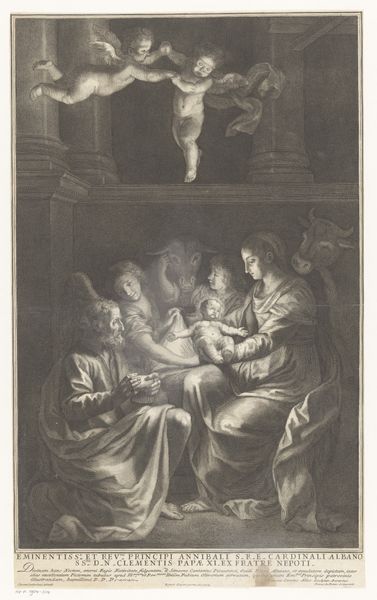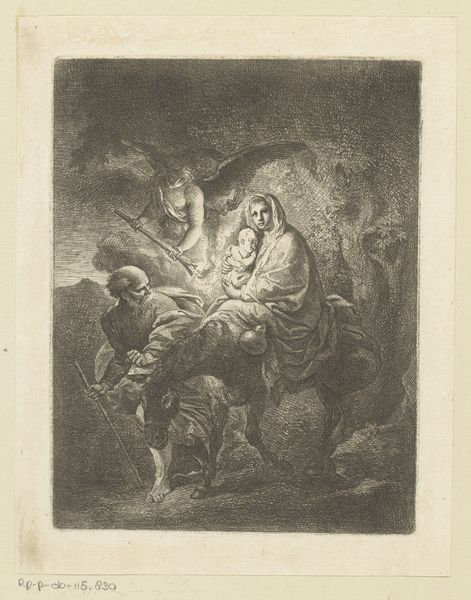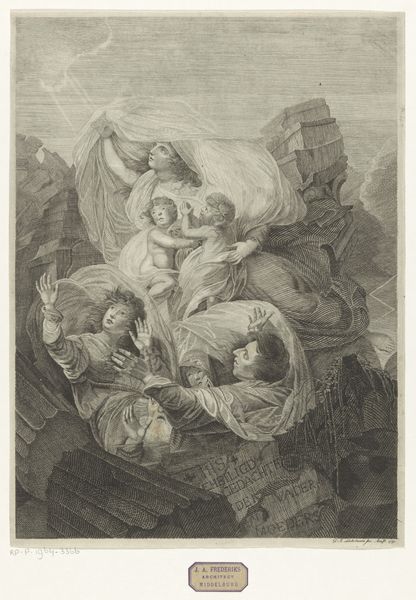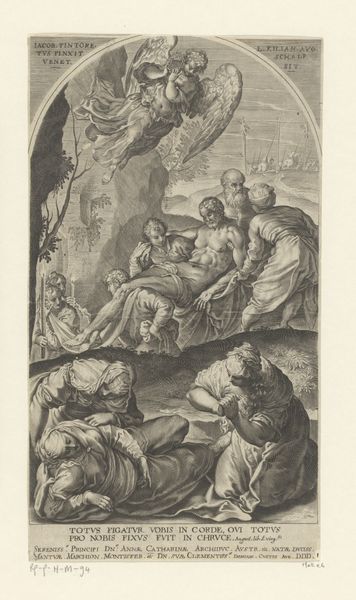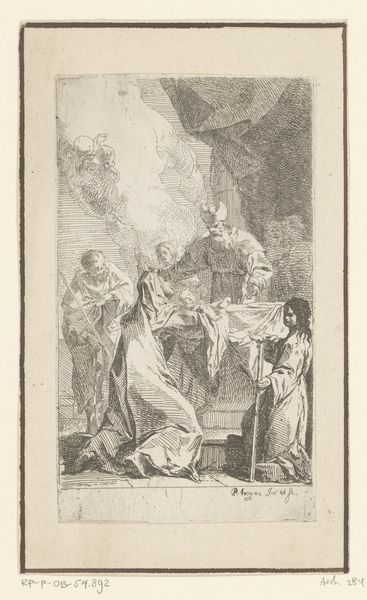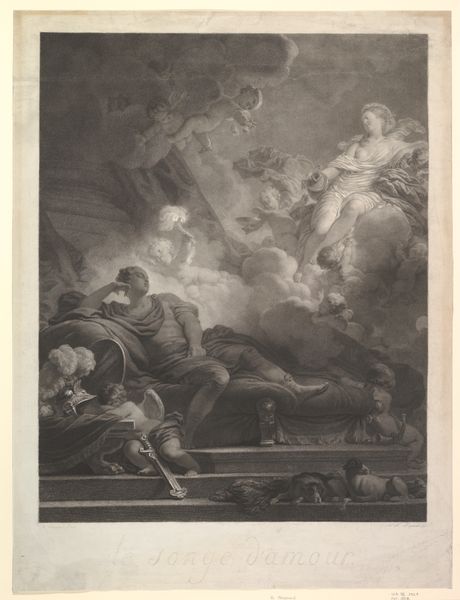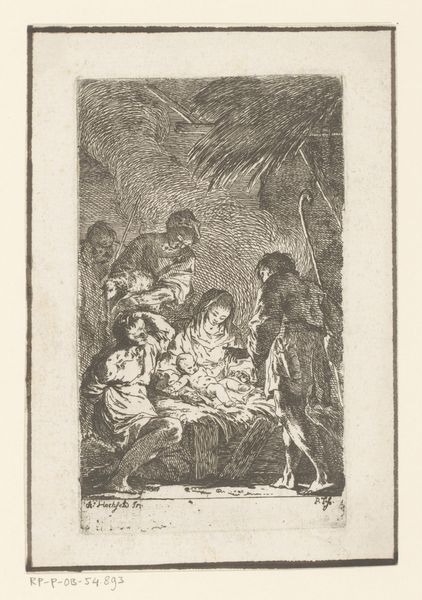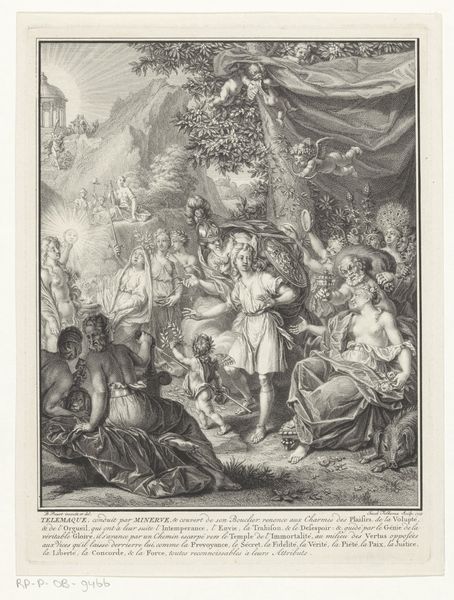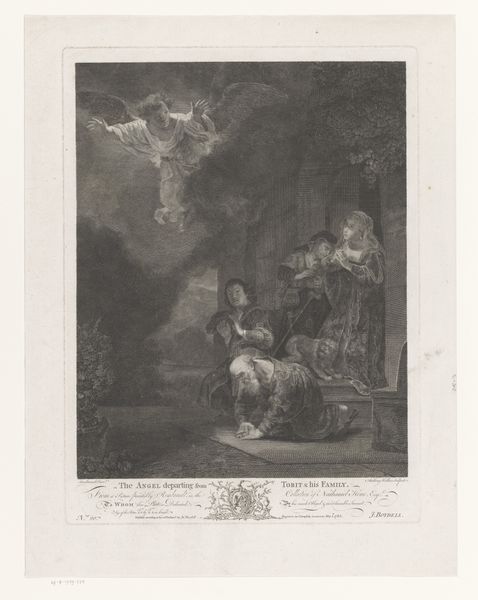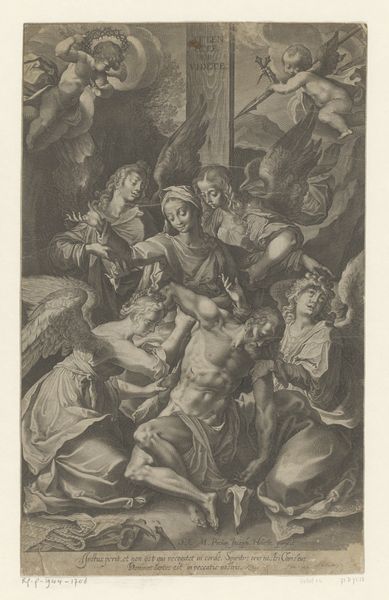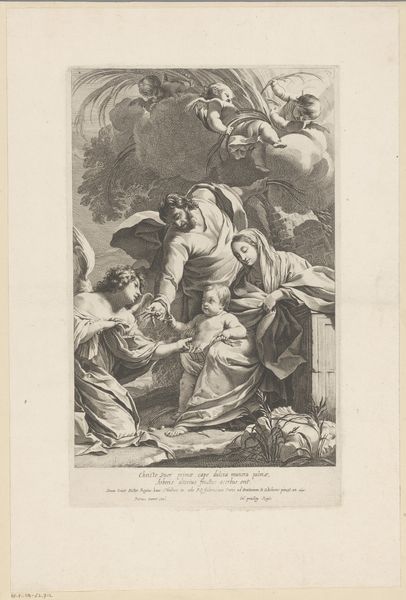
Dimensions: Sheet: 18 5/8 x 14 1/16 in. (47.3 x 35.7 cm) Plate: 17 7/8 × 13 3/16 in. (45.4 × 33.5 cm)
Copyright: Public Domain
Curator: I'm immediately struck by the soft glow amidst the densely worked details. It gives the scene a celestial, almost dreamlike quality. Editor: We are looking at "The Light of the World," an engraving created by Etienne Fessard in 1761, currently held in the collection of the Metropolitan Museum. This piece vividly portrays the Nativity, steeped in baroque aesthetics, offering fertile ground to discuss issues of religion, gender, and socio-political power structures within 18th-century Europe. Curator: You're right; the Virgin Mary here isn’t just a religious figure; she's a carefully constructed representation of femininity, particularly when juxtaposed against the older, more patriarchal figure of Joseph and the angelic chorus looming overhead. It brings to mind theories around performativity and assigned roles within religious and societal frameworks. Editor: Indeed. Look at the recurring visual symbol of light, which pierces through the clouds illuminating the Christ Child. This light is a potent metaphor – one deeply embedded in religious and philosophical traditions –representing not only divinity, hope, and knowledge but also a subtle yet powerful message. It speaks to ingrained cultural narratives and psychological associations people readily grasp and internalize. Curator: The distribution of shadow is telling. How darkness clings to certain figures, the active avoidance of any rendering of midwives present at the historical event… It implicitly communicates power and access that is awarded – or withheld - within this framework. Editor: Yes, these visual cues have enduring cultural potency. They reveal how meaning is constructed, reinforced, and passed down through generations, subconsciously shaping our understanding. By studying this, we unveil the intersection between the personal, cultural, and symbolic interpretations. Curator: Absolutely. I find the subtle tensions Fessard orchestrates fascinating, particularly given the social hierarchies evident in depictions from the time period. Analyzing them unveils much about 18th century society's conscious or unconscious power dynamics. Editor: A compelling reminder that even in depictions seemingly devoted, visual vocabularies quietly perpetuate long held collective mythologies. Thank you, for pulling back some of the many possible curtains obscuring these cultural symbols.
Comments
No comments
Be the first to comment and join the conversation on the ultimate creative platform.
